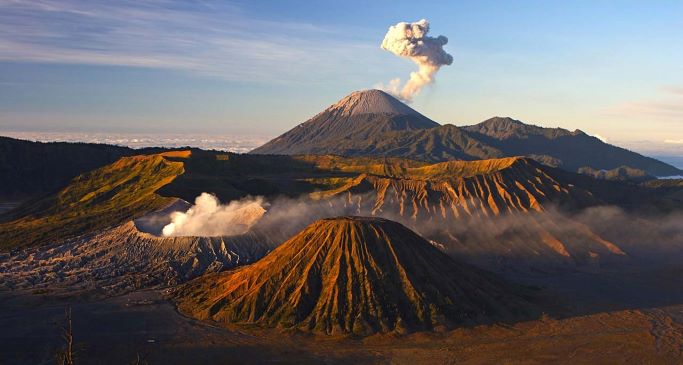A fairly recent study by scientists at Columbia University has come up with an interesting method of removing atmospheric carbon, the aim being to reduce greenhouse gases and global warming. Read on to find out how.

When CO2 comes into contact with peridotite, a rock commonly found in the Earth's mantle, but more rarely at surface, it is converted into inert and solid minerals such as calcite. The Sultanate of Oman has vast quantities of peridotite exposed at surface and geologist Peter Kelemen and geochemist Juerg Matter claim that the naturally-occurring process can be supercharged to grow underground minerals that can permanently store two billion tons of CO2 emitted by human activity every year. Source -Reuters/IOL Timothy Gardner.
I am not going to take up the climate-change cudgels at this stage
Al Gore has been campaigning for reductions in greenhouse gas emissions, and the Kyoto Protocol expired in 2012, and yet we are no closer to getting any meaningful reduction in greenhouse gas emissions. However I am not going to take up the climate-change cudgels at this stage, but will dwell rather on an amazing system which, over the long term, ensures that Earth's climate remains within certain limits which keeps our planet habitable - the carbon-silicate cycle.
An increase in 5 degrees will make vast portions of our planet uninhabitable
We might be able to negatively influence climate over the space of centuries or even decades, but if we look at the issues from a geological point of view, these human-induced perturbations in the grand sweep of geological cycles are inconsequential, and will not affect the long-term fecundity of the planet. We may however suffer tremendously during these short-term perturbations - an increase in 5 degrees will make vast portions of our planet uninhabitable.
A lucky roll of the evolutionary dice
Our distorted sense of self importance as a species causes us to fret about our future on Planet Earth. However if we can accept that our predominance might be nothing more than a lucky roll of the evolutionary dice, and that the survival of the human species is inconsequential to the future of the planet, then we can to some extent stop worrying about our supposed role in the grand scheme of the universe. Whether we like it or not, we will ultimately go extinct, but life in a myriad of different forms will continue through to the sun's ultimate supernova.
How Earth's climate is kept within those all-important limits
But let us move on from philosophy and speculation to some hard facts concerning our immediate environment and how Earth's climate is kept within those all-important limits. Most of us are aware of continental drift and plate tectonics, where Earth's crust is recycled by subduction of plates along the plate margins. The sinking plate descends into the fiery interior of the Earth where it melts and its constituent elements returned to the rock cycle via volcanic action.
Coral reefs sequestrate vast quantities of atmospheric carbon
One of the most important elements in this cycle is calcium, used widely by organisms, including humans, to build shells and bones. Add some carbonic acid to the mix and one gets the formation of calcium carbonate - CaCO3 - the most prevalent form being limestones. Limestones are one of the most common sedimentary rocks and generally represent ancient coral reefs preserved in the geological record. The development of coral reefs sequestrates vast quantities of atmospheric carbon for millions, sometimes billions, of years. Sometimes the limestones get caught up in the tectonic mill or become exposed to the agents of weathering and erosion. The more CO2 there is in the atmosphere, the faster limestone formation will occur, provided there is sufficient calcium available.

Question is, what is the source of the calcium? It is derived from igneous, sedimentary and metamorphic rocks brought to the surface by volcanic action due to plate tectonics. The same eruptions that spew CO2 into the air deliver the chemical necessary to remove it, thereby keeping things in balance. Wow!
The higher the concentration of CO2, the warmer the planet gets
Now we need is a source of the carbonic acid. The weathering of silicates - feldspars and micas - in common rocks such as granites and sandstones - produces calcium, silicon, water and the all-important carbonic acid. Now, as we have already seen, the more CO2 there is, the faster limestone forms, thereby removing the same CO2 from the system. Similarly, the higher the concentration of CO2, the warmer the planet gets - an unfortunate fact which we are discovering to our cost. This leads to increase in evaporation which leads to increased rainfall and associated increase in weathering.
What a wonderful, self-regulating, fantastic, system
The greater the amount of weathering, the greater the formation of carbonic acid, which in turn leads to faster limestone production. This of course speeds up the removal of the CO2 from the atmosphere, ultimately cooling the planet. Cooling then reduces the rate of weathering, carbon levels rise and Earth warms once again. What a wonderful, self-regulating, fantastic, system! But it takes more than a few decades or centuries to smooth out the variations in atmospheric carbon.
High carbon levels in the atmosphere will be removed due to the carbon-silicate cycle
Cold comfort perhaps to know that ultimately the high carbon levels in the atmosphere will be removed due to the carbon-silicate cycle, but certainly not within the immediate future. Using peridotite technology may be a short term but expensive solution to removing carbon from the atmosphere, but clearly there is a far more efficient machine for doing this, although it is going to take several thousand years for those wheels to turn.

